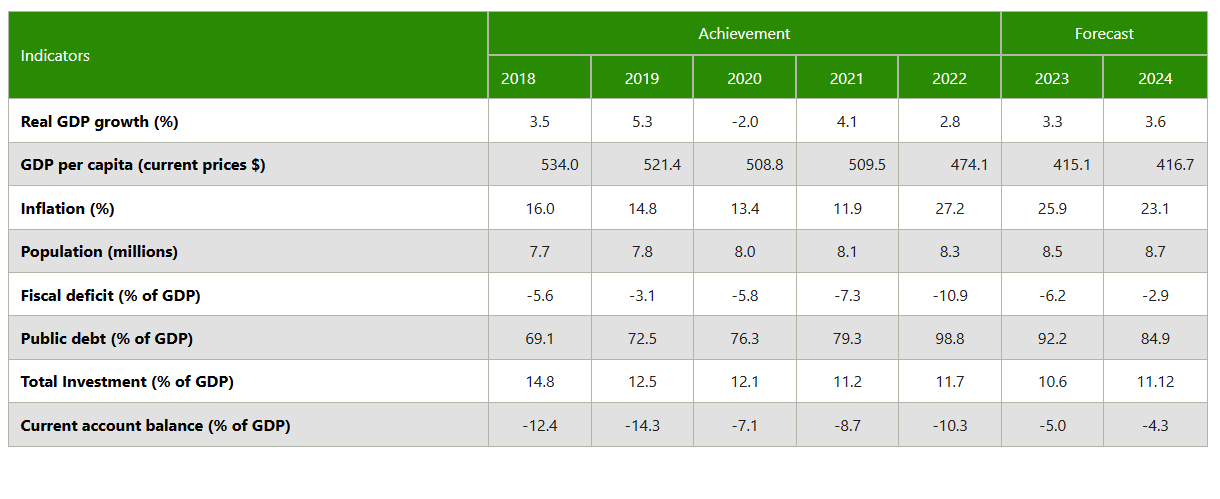
Macroeconomic Performance
Table 1: Overview of some macroeconomic indicators
 Sierra Leone recorded an average growth rate of 2.7 per cent over the last five years. Economic activity in Sierra Leone grew by 2.8 per cent in 2022, down from 4.1 per cent in 2021. The slowdown in growth was partly due to a rather high average inflation, which eroded value addition in various sectors. Average inflation ended 2022 at 27.2 per cent (from 11.9 per cent in 2021), driven mainly by energy and food prices and the aggressive depreciation of the local currency. Fiscal balance worsened to -10.9 per cent of GDP, from -7.3 per cent of GDP in 2021, with debt rising markedly to 98.8 per cent of GDP, on account of the wide fiscal deficit. The current account balance worsened to -10.3 per cent, in line with the high food and non-food inflation.
Sierra Leone recorded an average growth rate of 2.7 per cent over the last five years. Economic activity in Sierra Leone grew by 2.8 per cent in 2022, down from 4.1 per cent in 2021. The slowdown in growth was partly due to a rather high average inflation, which eroded value addition in various sectors. Average inflation ended 2022 at 27.2 per cent (from 11.9 per cent in 2021), driven mainly by energy and food prices and the aggressive depreciation of the local currency. Fiscal balance worsened to -10.9 per cent of GDP, from -7.3 per cent of GDP in 2021, with debt rising markedly to 98.8 per cent of GDP, on account of the wide fiscal deficit. The current account balance worsened to -10.3 per cent, in line with the high food and non-food inflation.
Outlook
Sierra Leone’s economy is projected to grow by 3.3 per cent in 2023 and further by 3.6 per cent in 2024. This projected growth will be supported by investments in mining operations and a projected reduction in production costs. Average inflation is projected to ease to 25.9 per cent and 23.1 per cent in 2023 and 2024, respectively. Fiscal balance is projected to continue on a path of consolidation, narrowing to -6.2 per cent of GDP in 2023 and further to -2.9 per cent of GDP in 2024, while the debt-to-GDP ratio declines consistently to 92.2 per cent and 84.9 per cent in 2023 and 2024, respectively. The current account balance is projected to narrow to -5.0 per cent in 2023 and further to -4.3 per cent in 2024.
Probable Headwinds
Low commodity prices will hurt the Sierra Leonean economy on the export side, just as high consumer prices will hurt domestic demand and the growth in overall economic activity. Failure of the planned iron ore investments will constrain economic growth in the short-to-medium-term.

